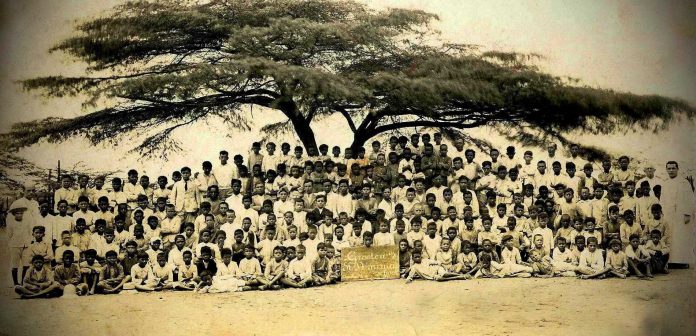Article by Etnia Nativa call us 592 2702 and book your experience!
There has been great changes in recent years concerning the impact that colonization had on America, creating a greater awareness that the arrival of Europeans to the American continent unleashed an unprecedented destruction among native peoples. It is not a pleasant story to tell when everywhere we look we will find disasters.
Although the consensus has been reached that the decline in the native population can be attributed to a large extent to the introduction of old world diseases in to the new world and which the native peoples were immunologically defenseless against. In recent days, we see the uncovering of new situations emerge, as the discontent in Canada for the discovery of mass graves of native children in the vicinity surroundings institutions that supposedly had to “Guide these in the Christian faith”.
Numerous diseases were brought to the Americas, including smallpox, bubonic plague, chickenpox, cholera, the common cold, diphtheria, influenza, malaria, measles, scarlet fever, sexually transmitted diseases, typhus, strings of tuberculosis, and pertussis. Each of these brought destruction through sweeping epidemics, involving disability, illness, and extensive deaths. Potential Europeans carriers infected with diseases were not adequately quarantined, allowing the diseases to spread into epidemics. The trade of Native American captives and the use of commercial trade routes contributed to the spread of disease.
They were also times of total violence or negotiated alliances and not of persuasion. The natives were baptized in the Christian faith, the Indian women being handed over to the Spanish and distributed among the conquerors. The ultimate goal was to show that resistance was impossible and that they were exposed to ruthless repression, but that better treatment could be received by siding with the victors. Essential was to break their spiritual faith and connection to mother earth. Prohibiting and considering all as pagan religious idolatry. However it was so much their customs and languages that maintained the Indians spirit of resistance.
We can also think that perhaps a vague hope then spread among the Indians that by becoming Christians, like the Spaniards, they could improve their lot, which was to be mercilessly despised and exploited.
In Aruba our parents’ generation where forbidden to speak Papiamento during school hours, if caught any of the children speaking a single word a wooden rod directed energetically by the teacher would hit their hand palms to make them notice that they should not express themselves in your native language.
It was in 2003 that Papiamento is official in Aruba and since 2007 in Bonaire and Curacao. It has its own spelling since 1976. The oldest preserved text in Papiamento is a letter from a Curacao Jew from 1775. There are authors who think that, at least the linguistic basis is older and there are various theories about its origin. What can be defined is that Papiamento is a language that developed on its own by contact between speakers of various languages. To communicate with another, this language was used as a general language or “Lengua Franca”.
It is not only about the subordination of the colonized culture to the colonizing culture but about the imposition of the colonizing thought so that there was no chance of think differently. Taking it out of the space where it has its own existence to place it in the space of the colonized where it exists if it renounces being what it is.
To get to know more over Aruba’s and its origins, its animals and culture, we highly recommend you to book your visit for our renowned cultural encounter session has been entertaining curious participants for decades. Mail us at etnianativa03@gmail.com or WhatsApp 297 592 2702 to confirm your participation. Our facilities and activities take place close to high rise hotels.















